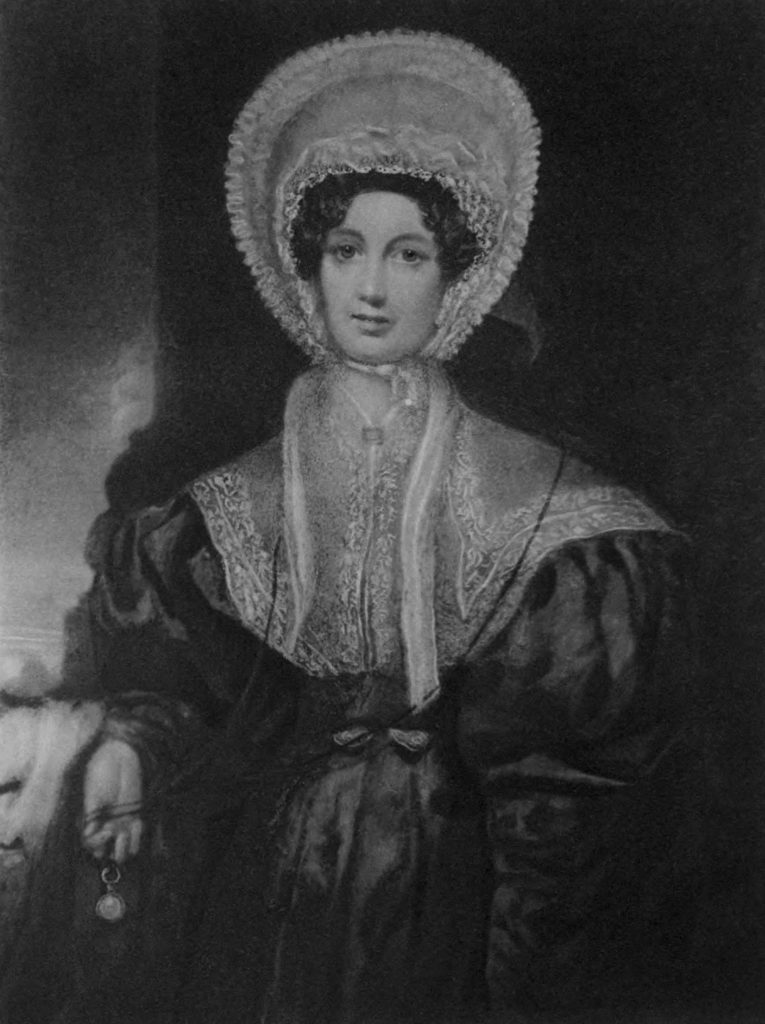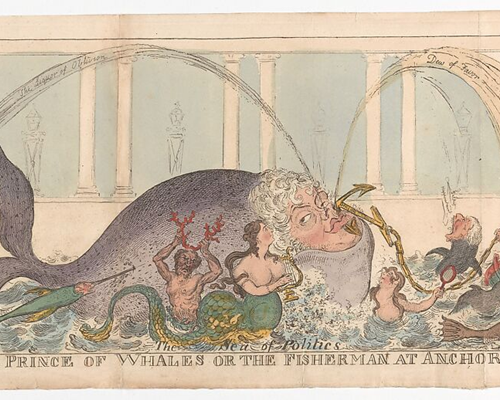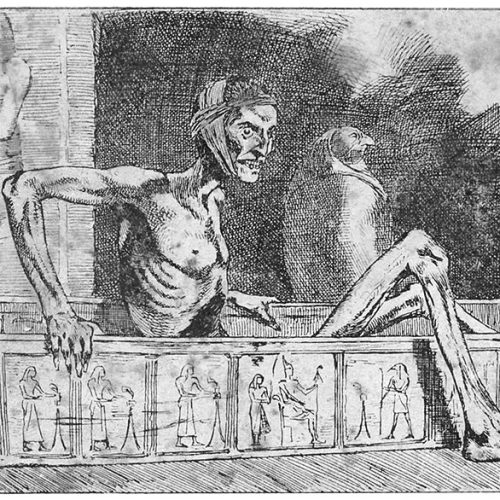text by Agnieszka Sienkiewicz-Charlish
In 1813 Jane Austen published one of her most popular and much-loved novels – Pride and Prejudice. Five years later, in 1818 in Edinburgh, a Scottish writer Susan Ferrier published her first novel The Marriage. It was immensely popular and sold 1,500 copies within the first 6 months. Big sales meant that the publisher was willing to pay £1,000 for her second novel The Inheritance (1824) and a remarkable £1,700 for the third, Destiny, or the Chief’s Daughter (1831). Today Austen remains one of the most popular writers and a focus of academic study whereas Ferrier’s works have largely been forgotten. So who was the “Scottish Jane Austen”?

from an engraving after the 1836 portrait by R. Thorburn:
Memoir and correspondence of Susan Ferrier, 1782-1854 (1898)
Susan Ferrier was born on the 7th of September 1782 in Lady Stair’s Close in Edinburgh’s Old Town. She was the youngest of 10 children of James Ferrier and Helen Coutts. Her father was a Writer to the Signet (a society of Scottish solicitors) and at one time a principal clerk at the Court of Session (together with Sir Walter Scott). Thus, Susan Ferrier came from a family which was well-known in Edinburgh “society” and some of her fictional characters were based on real and recognisable people of her acquaintance. Perhaps this is a reason why she chose to publish all her novels anonymously, but more likely it was connected with the position of women in Georgian Society and the fact that their role in the society was confined to the domestic sphere. Whatever her reason, she was determined to keep her authorship a secret, writing in her diary: “I will never avow myself…I could not bear the fuss of authorism!”[1]
At the time of their publication there was a lot of debate as to who was the author of the novels; in fact, many readers attributed them to Sir Walter Scott. Scott did not write the novels, but is known to have appreciated and supported her writing even calling Ferrier “his sister shadow.”[2] Ferrier’s last novel was dedicated to him.
At first glance the obvious parallels drawn between Ferrier and Austen’s novels are understandable. First of all, both writers provided a satirical, often amusing critique on high society in the late 18th and early 19th centuries focusing in particular on the female experience. Moreover, they share interest of the similar themes: love, marriage, class, female education. The opening line of The Inheritance also sounds rather familiar: “It is a truth, universally acknowledged, that there is no possession so deeply rooted in human nature as that of pride.” [3]The difference is that Ferrier’s novels are not only concerned with the above mentioned themes, but also national identity and the difference between Scottish and English cultures. They present lively pictures of Scottish life and character and are note-worthy for their use of Scots (in the 18th century many intellectuals were trying to remove ‘scotticisms’ from the spoken and written language).
Even though the plot of The Marriage shares many similarities with Austen’s novels – a beautiful but vain English heiress marries the impoverished son of a Scottish laird and soon discovers the difference between passionate romantic love and real life – The Inheritance and Destiny have more in common with Dickens. In Destiny, for instance, the implications of the clan system’s demise and the rise of capitalism are examined via the narrative of the Laird of Conroy, whose resistance to modernization has terrible effects for his estate and the future of his daughter.
Despite their popularity, by late 19th century Ferrier novels have fallen out of readers’ favour. In 1893 Charles Townsend Copeland wrote in The Atlantic that:
As happens with most writers who do not at first give their names to the public, Miss Ferrier has paid the price of anonymity by being twice unknown: for a long time she was not found out (…) and now for many years she has been forgotten. It has been my lot, and doubtless others have had the same experience, to find any mention of The Inheritance, or even of Marriage, received with a blank look, followed by the eager inquiry of who wrote it, and at last by the civil subsidence of interest which commonly greets a reference to old novels.[4]
In 2017 a Scottish crime writer Val McDermid said she was hoping to revive Susan Ferrier’s reputation as one of Scotland’s great novelists and included the writer in her Edinburgh-wide art installation, “Messages from the Sky”. In 2020, a new critical edition of Marriage edited by Dorothy McMillan was published by the ASLS, indicating the beginning of a renewed interest in Ferrier’s debut novel. One can just hope that the other two novels by Ferrier will receive more attention not just from scholars, but also general readers.
[1] Memoir and Correspondence of Susan Ferrier 1782–1854, edited by John A. Doyle, John Murray, 1898, p. 178.
[2] Scott, Walter. A Legend of the Wars of Montrose, edited by J. H. Alexander, Edinburgh UP, 1995, p. 183.
[3] Ferrier, Susan. The Inheritance, edited by Ronnie Young, Kennedy & Boyd, 2009, p. 1.
[4] Townsend Copeland, Charles. “Miss Austen and Miss Ferrier.” The Atlantic, June 1893, https://www.theatlantic.com/magazine/archive/1893/06/miss-austen-and-miss-ferrier/529989/

